Sculptures have been a vital part of human history for thousands of years. From ancient civilizations to modern times, sculptures have been used to depict gods, heroes, and everyday people. Each sculpture tells a unique story and holds a special place in art history. In this article, we will explore some of the most famous sculptures from around the world and analyze their significance.
We will delve into the details of each sculpture, including its composition, style, and symbolism. By examining the techniques used by the artists, we will gain a deeper understanding of the historical and cultural context in which each sculpture was created. Whether you are an art enthusiast or simply curious about the world of sculpture, this article will provide a comprehensive analysis of some of the most iconic works of art in history. Join us on this journey as we explore the fascinating world of sculptures and their enduring impact on human civilization.
1. David – Michelangelo – 1501-1504
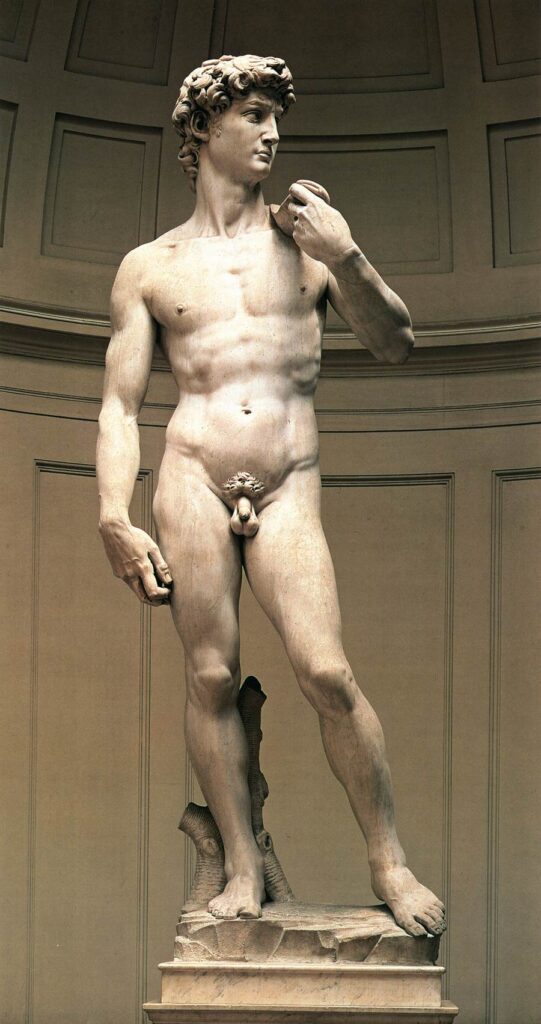
Created by Michelangelo between 1501-1504, David is a magnificent marble sculpture standing at an impressive 17 feet tall. This masterpiece of Italian Renaissance sculpture is an iconic representation of the Biblical hero, portrayed as a standing male nude. Commissioned by the Opera del Duomo for the Cathedral of Florence, David depicts his victory over Goliath using a sling and beheading him with his own sword.
Michelangelo’s attention to detail and skill in bringing marble to life is evident in the craftsmanship of this sculpture. To create this piece, Michelangelo used a 50-year-old block of marble that had been previously worked on by Donatello. Despite the difficult nature of working with such large pieces of stone, especially with one that had already been partially carved, Michelangelo demonstrated his remarkable skill in making marble seem like living flesh and blood.
David became the first colossal marble statue produced during the early modern period following classical antiquity. The statue has become so iconic that it has become a symbol of not just Florence but also the whole Florentine Renaissance. Today, visitors from all around the world come to marvel at its grandeur and artistry at its home in Florence’s Galleria dell’Accademia.
2. The Thinker – Auguste Rodin
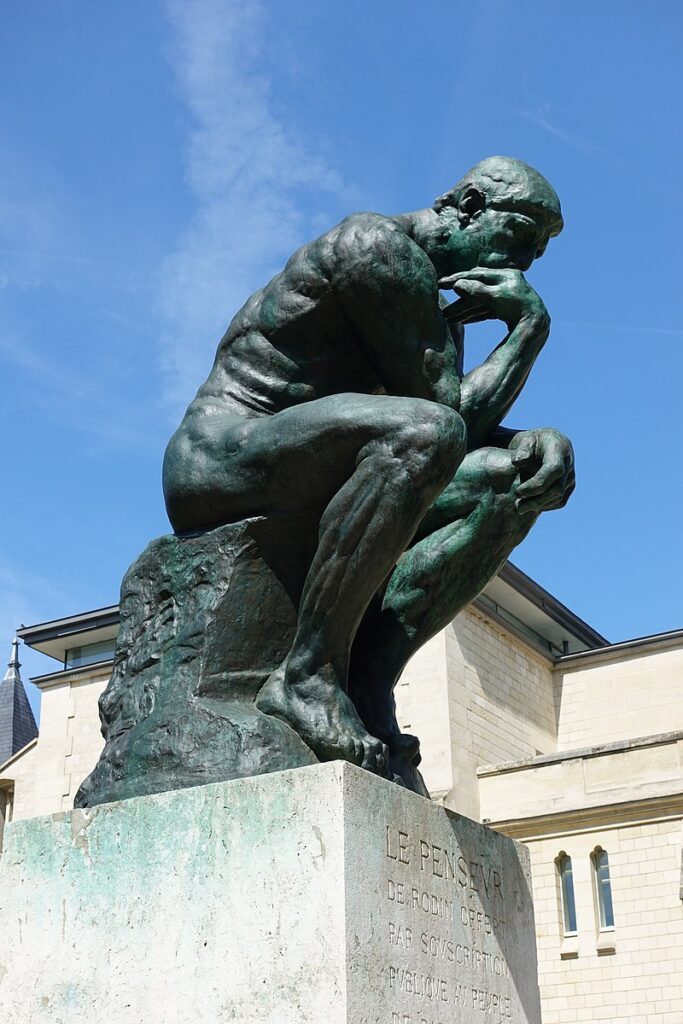
Auguste Rodin’s renowned sculpture, The Thinker, is a monumental bronze cast depiction of a muscular nude male placed on a rock. It is one of the artist’s most famous and well-regarded works. Originally entitled The Poet, the sculpture was designed to sit atop bronze doors that were commissioned for a museum in the late 19th century.
The artwork has become so recognizable worldwide that it exists in about 28 full-size casts in museums across the globe. It also comes in several dozen smaller-sized castings and plaster models and studies. Auguste Rodin’s sculptures are known to be figurative in nature and are considered a pioneer of modernist sensibility toward abstraction in sculpture.
Rodin’s wife was even buried with a casting featured on her grave, emphasizing its significant role both as an artistic treasure and as a profound symbol within popular culture.
3. Venus De Milo – Alexandros Of Antioch – 2nd Century BC
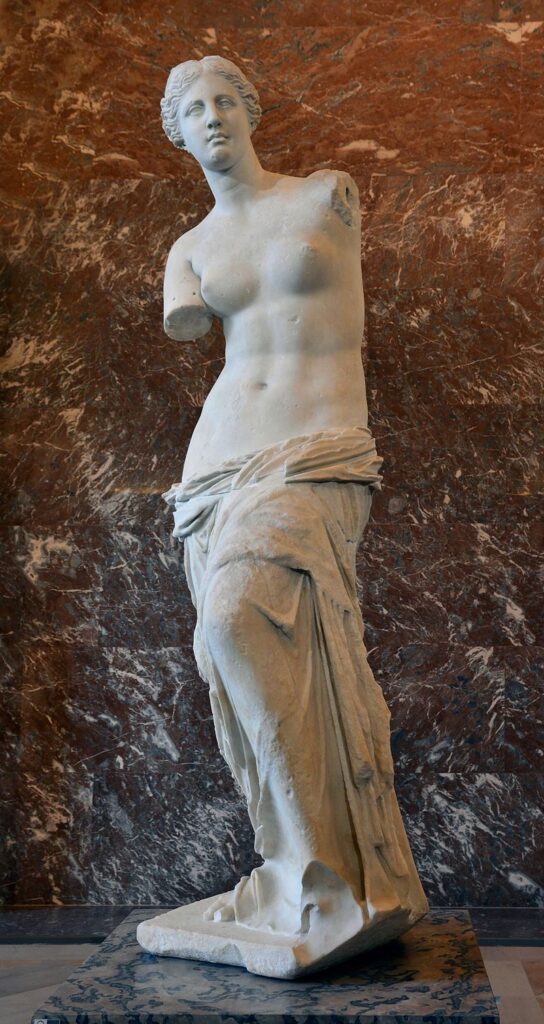
Venus de Milo is a renowned ancient Greek sculpture created by Alexandros of Antioch in the late 2nd century BCE. It stands as a larger-than-life female figure posed in a classical S-curve, and it is believed to represent Aphrodite, the goddess of love and beauty. The sculpture was discovered in pieces on the Aegean island of Melos in 1820 and presented to King Louis XVIII.
Alexandros of Antioch was a wandering artist who worked on commission during the Hellenistic period. He crafted Venus de Milo out of white marble from Paros, Greece, using his skills for rendering complex shapes and textures into lifelike forms.
The statue’s missing arms are its most famous feature. One theory suggests that they may have held objects such as shields or garments, while another hypothesis implies that they were never part of the original work but were added later by another artist. Regardless, Venus de Milo remains highly regarded for its expressive form and elegant curves.
Alongside the Mona Lisa and The Winged Victory of Samothrace, Venus de Milo is one of the three most famous female figures housed in the Louvre Museum in Paris. Visitors can study this remarkable sculpture up-close to appreciate Alexandros’ breathtaking attention to detail first-hand.
4. Pieta – Michelangelo – 1499
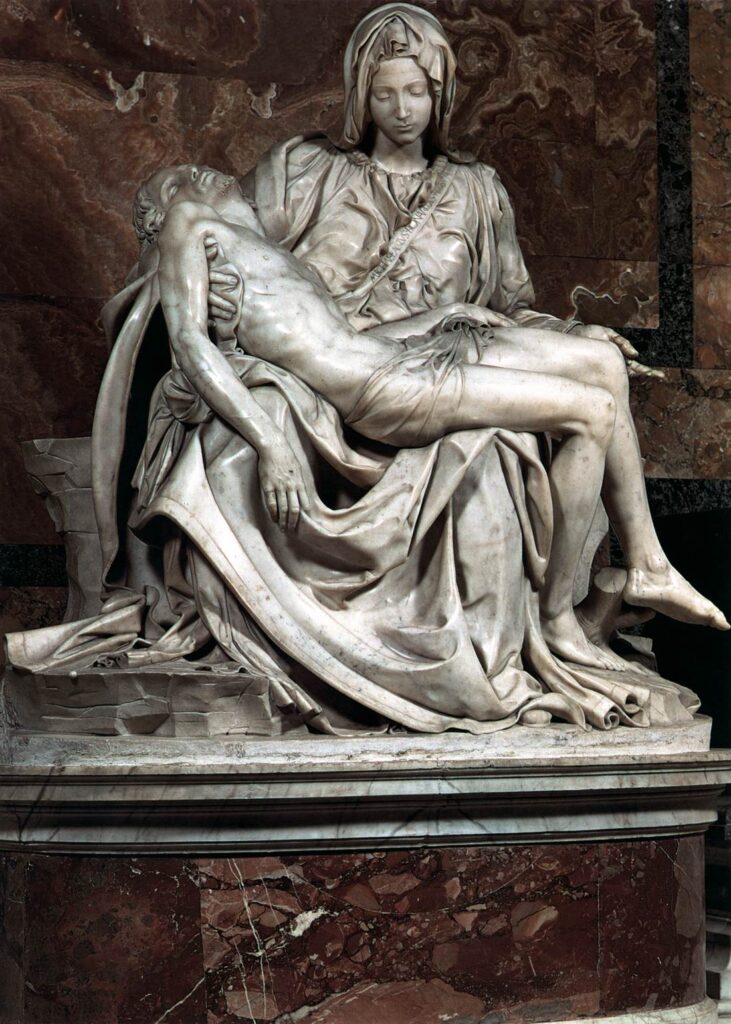
The Pieta is a notable sculpture created by Michelangelo in the late 15th century. The marble statue depicts Mary holding the lifeless body of Jesus after he was crucified on Mount Golgotha, representing the “Sixth Sorrow” of the Blessed Virgin Mary. This masterpiece can be found in St. Peter’s Basilica within Vatican City.
Michelangelo crafted this sculpture from white Carrara marble and completed it before he turned 25 years old under commission by French Cardinal Jean de Bilhères-Lagraulas. The finished product stands at just over five feet tall and nearly six feet wide, depicting an emotional scene that showcases extraordinary artistic detail and skill.
The Pieta showcases Michelangelo’s versatility as an artist during the Renaissance era, where he continued to develop as a sculptor even after its completion. The art piece has withstood centuries and remains appreciated for its intricate design that captures a poignant moment between Jesus and his grieving mother, Mary.
5. Winged Victory Of Samothrace – 2nd Century BC
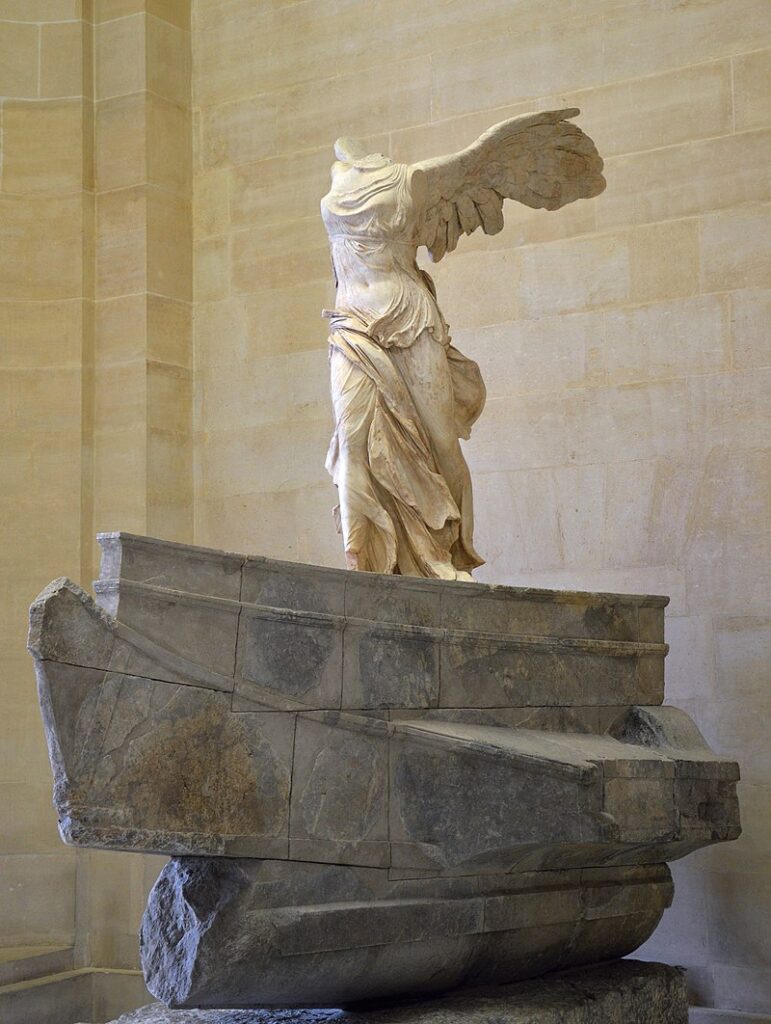
The Winged Victory of Samothrace is a Greek sculpture dating back to the Hellenistic era in the beginning of the 2nd century BC. It is an exceptional piece of art and is admired for its naturalistic anatomy, creating a realistic depiction of movement. The statue was created by an unknown artist who placed Nike in an asymmetrical stance, representing her body in motion.
This statue was excavated on the Greek island of Samothrace by Charles Champoiseau in 1863. He brought it to France and it currently resides at the Musée du Louvre in Paris. The sculpture depicts Nike, a Greek goddess that represents victory. Its original location was within a temple environment on its home island, offering insight into everyday religious practices during ancient Greece.
The Winged Victory of Samothrace stands out for numerous reasons; its winged form symbolizes strength and speed, attributes that embody victory perfectly. Similar sculptures were popular throughout Hellenistic art but this one achieved fame due to its unique realistic detail. The folds and drapery on Nike’s clothing have been sculpted expertly to capture how fabric moves with wind while still maintaining her facial expression and pose immaculately.
6. Statue Of Liberty – Frédéric Auguste Bartholdi – 1876
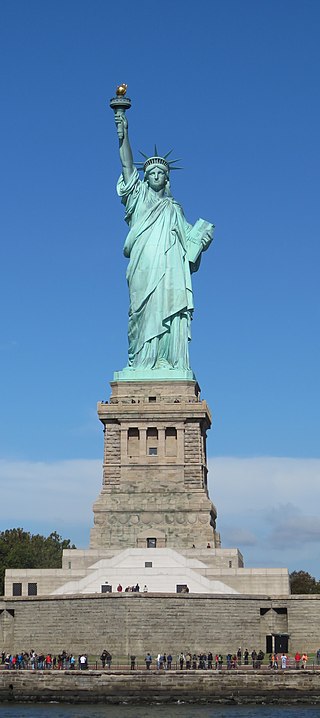
Frédéric-Auguste Bartholdi was a French sculptor known for creating iconic monuments, including the Statue of Liberty in New York Harbor. The statue was gifted to the United States by the French people in 1876 to commemorate the centennial of American Independence, as well as the recent abolition of slavery. The statue was designed by Bartholdi, while the internal structure was built by Gustave Eiffel (the architect of the Eiffel Tower in Paris).
7. Moses – Michelangelo
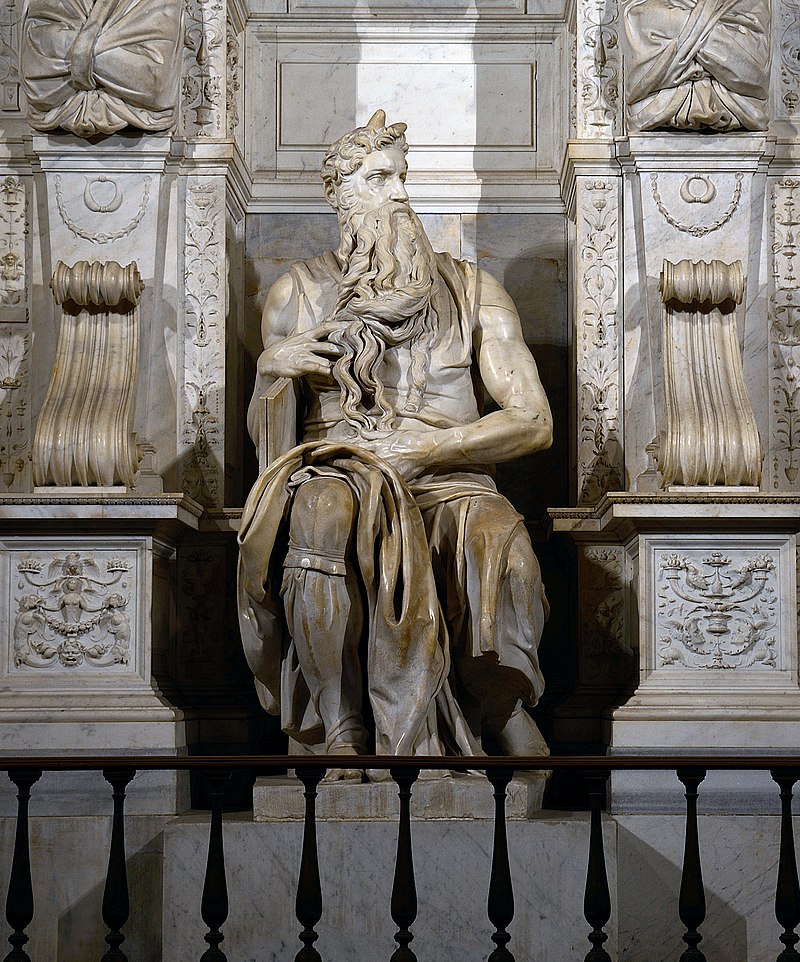
Michelangelo’s statue of Moses is a true masterpiece that was originally created to be part of Pope Julius II’s tomb and represents a prophet in the moment after he found the Israelites worshiping the golden calf. The sculpture is positioned on a marble chair between two beautifully adorned marble pillars, showcasing its grandeur.
The statue was meant to be placed at an elevation of 3.74 meters (12 feet 3 inches) above ground level, thus becoming the centerpiece of the enormous tomb planned for Pope Julius II. One interesting fact about this sculpture is that it took Michelangelo just two years from 1513-1515 to complete it, considering its size and intricate details.
The most significant feature of Michelangelo’s Moses statue is that it offers an interpretive piece depicting Moses when he descended down from Mount Sinai upon discovering his people were engaging in idol worship. In light of this discovery, he had shown his rage by shattering the tablets containing Ten Commandments dictating God’s laws on morality and ethical behavior as they were not followed obediently by people. This depiction has contributed to making Michelangelo’s Moses one of his captivating masterpieces in terms of theme as well as composition.
8. Laocoön And His Sons – Agesander, Polydoros, Athanadoros
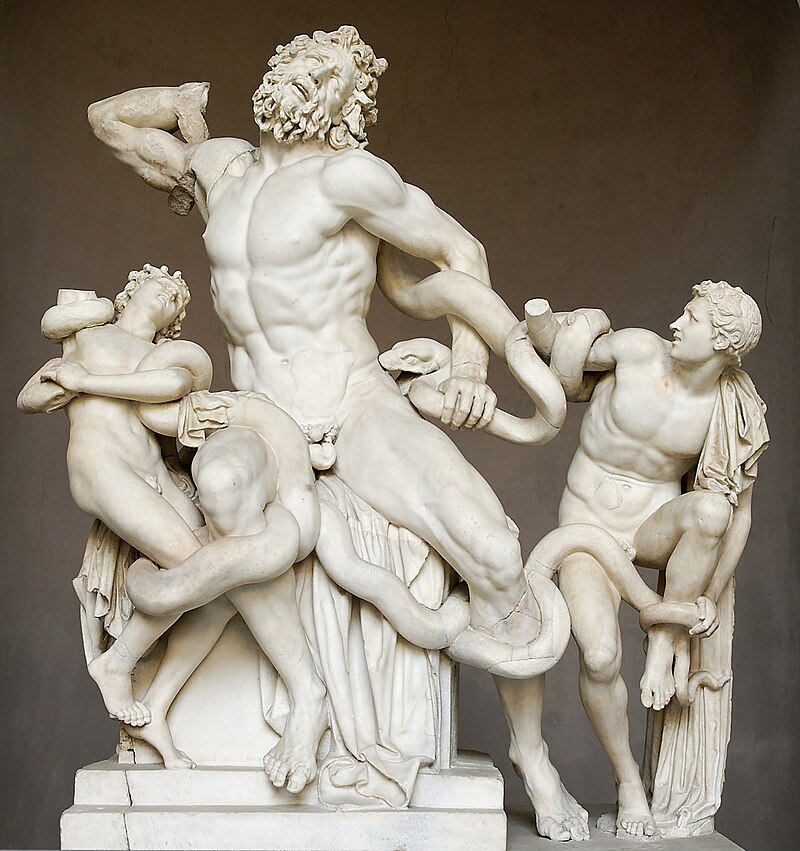
Laocoön and His Sons is a famous marble sculpture that dates back to the Hellenistic Period. It was discovered in a Roman vineyard in 1506 and is currently placed in the Vatican. The sculpture depicts Laocoön, a Trojan prince and priest, along with his young sons Antiphantes and Thymbraeus.
What makes this sculpture exceptional is its creation by three extremely talented Greek artists from the island of Rhodes: Agesander, Polydorus, and Athenadoros. They created this masterpiece using their remarkable talent for carving marble. Their attention to detail shines through in every intricately carved muscle on the bodies of Laocoön and his sons.
While scholars have debated its original creation date and location over time, there’s no denying its impact on artistry since its discovery. Countless artists have reproduced this famous sculpture around the world throughout history as it remains one of the most iconic Ancient sculptures ever found.
9. The Kiss – Auguste Rodin – 1889
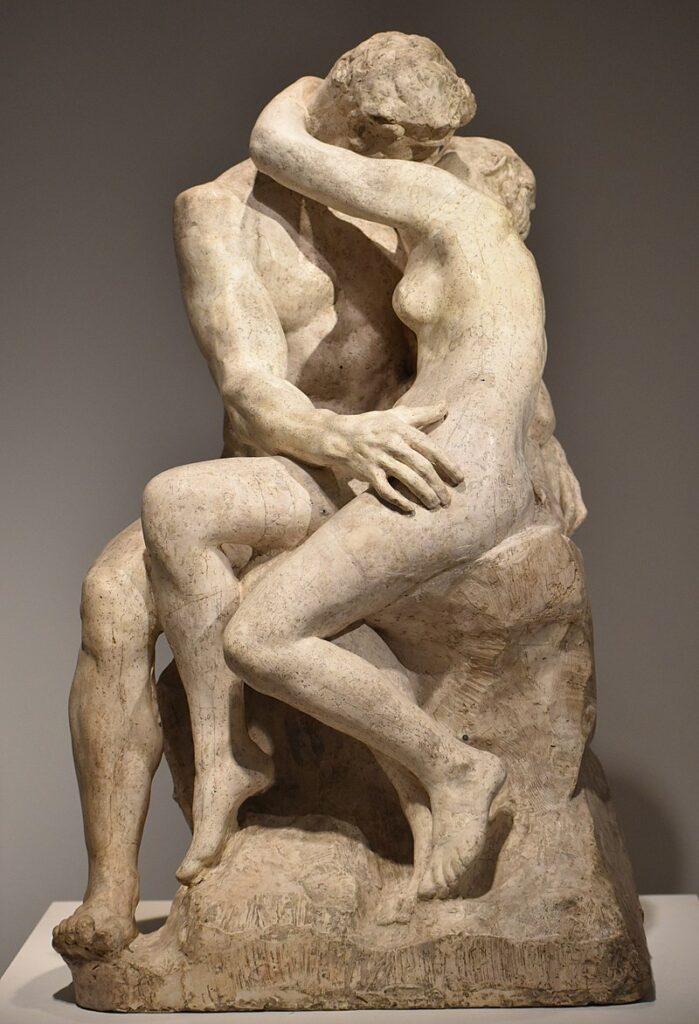
Auguste Rodin’s The Kiss is a renowned marble sculpture that captures a passionate moment between two lovers. It was created in 1889 with the assistance of Ganier, Rigaud, and Mathet and is one of Rodin’s most significant works. The sculpture portrays Francesca da Rimini and Paolo Malatesta from Dante’s Divine Comedy, blending eroticism with idealism to create a powerful image of sexual love.
The Kiss has three full-scale versions made by Rodin throughout his lifetime, with each depicting different aspects of the intimate moment shared between the lovers. One version can be seen at the Musée Rodin in Paris, while another is displayed at the Ny Carlsberg Glyptothek in Copenhagen. The Tate’s version is showcased in London and was purchased through public contributions in 1953.
Rodin’s expressive use of plaster redefined how sculptures were perceived at that time. Through The Kiss, he represents burning desire and passion posed against thoughtfulness and rationality depicted via another famous work “The Thinker”. Although the artwork caused scandals upon its first exhibition due to its sensual nature, it continues to be hailed as one of Rodin’s masterpieces.
10. Discobolus – Myron – 460-450 BC
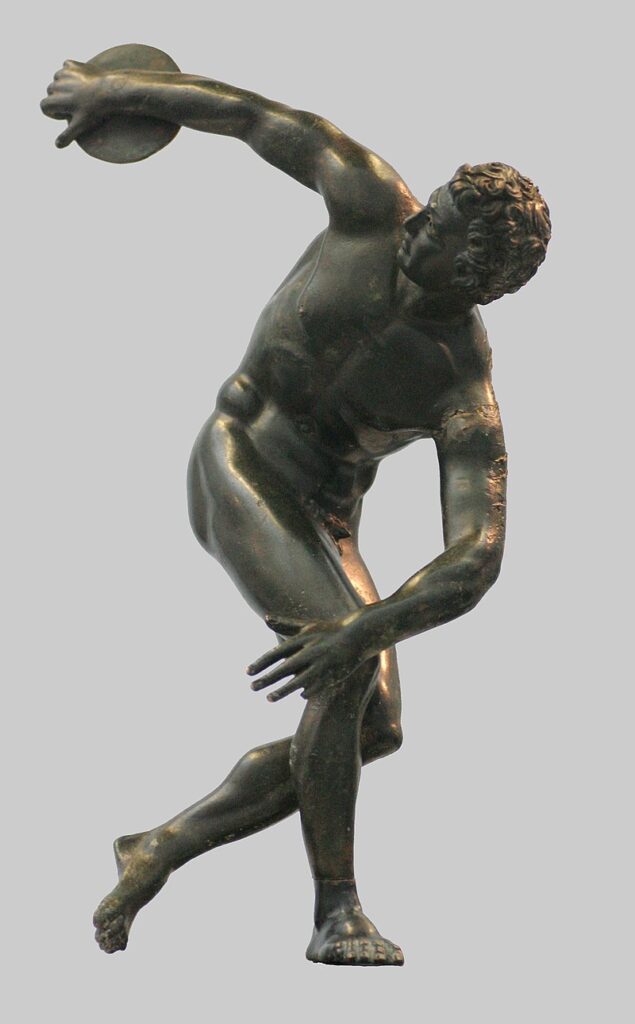
Myron’s Discobolus is an ancient Greek sculpture that has become one of the most iconic artworks of classical antiquity. The original bronze sculpture, completed around 460-450 BC, is unfortunately lost to history and can now only be known through numerous Roman copies in marble.
This piece depicts an athlete throwing a discus, captured at the moment just before release. Myron was a Greek sculptor who was noted for his depictions of animals and athletes in action. His use of exaggerated muscle definition and carefully crafted details make this sculpture a true masterpiece.
The Discobolus was highly valued by the ancient Greeks as a symbol of status, both for its artistic beauty and athletic subject matter. Many replicas exist today in museums around the world, but each copy continues to amaze viewers with its lifelike depiction of human form in motion.
Overall, Myron’s Discobolus remains an incredible example of art from ancient Greece and continues to inspire awe among modern observers. Its portrayal of physical movement stands out as its most notable feature – a lasting testament to the skillful craftsmanship that went into its creation so many centuries ago.
11. Christ The Redeemer – Landowski, Silva Costa, Leonida, Caquot – 1922-1931
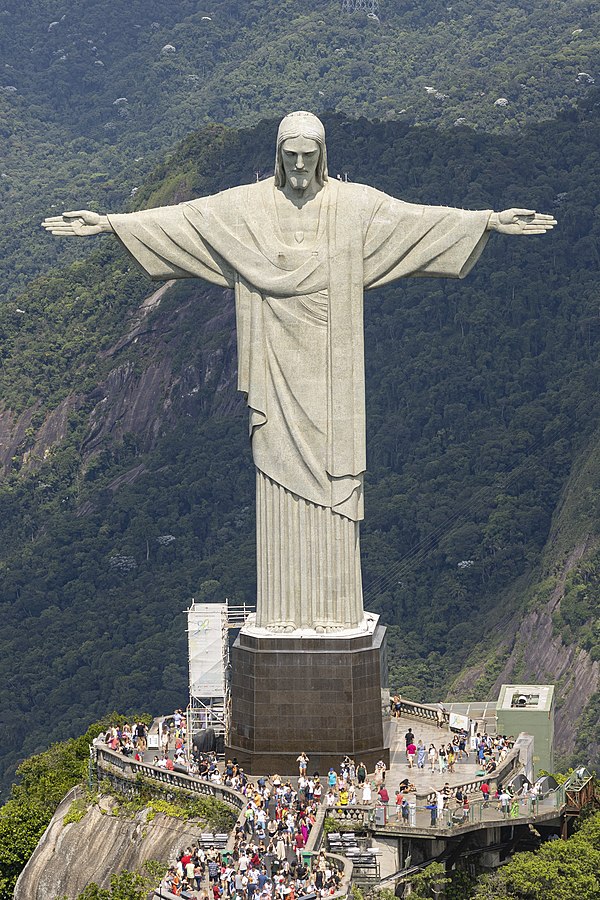
Christ the Redeemer is a towering Art Deco statue of Jesus Christ situated in Rio de Janeiro, Brazil. Paul Landowski, a prominent French sculptor, created the statue while Brazilian engineer Heitor da Silva Costa and French engineer Albert Caquot oversaw its construction. Additionally, Romanian sculptor Gheorghe Leonida was responsible for crafting the face of the statue. The entire process took nine years to complete (1922-1931).
Standing at 30 meters tall and weighing over 1145 tons, Christ the Redeemer boasts a remarkable distance of 28 meters between his outstretched hands. Landowski used large pieces of clay to create a model for this colossal statue in France that was later shipped to Brazil for further development.
12. The Burghers Of Calais – Auguste Rodin – 1885
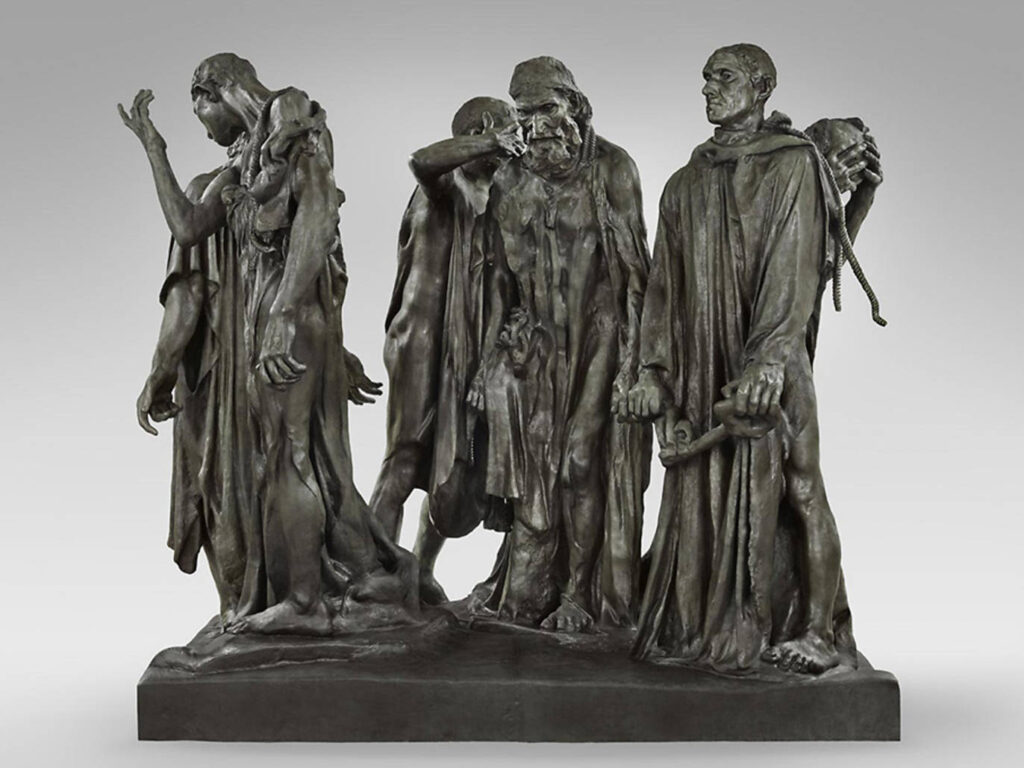
The Burghers of Calais is a bronze sculpture created by Auguste Rodin in 1885 to commemorate the valiant sacrifice of six prominent citizens during a siege in 1346-47. The sculpture challenged traditional public sculptures that were prominently placed on pedestals and idealized their subjects as heroic figures. Instead, Rodin depicted the burghers as human beings with contorted faces and bodies, overwhelmed by the weight of their circumstances.
There are twelve original castings of the sculpture that exist worldwide. This includes one in Calais, France, where it was initially displayed. Numerous other copies have been made over time due to its popularity and high demand.
What makes The Burghers of Calais stand out is its depiction of everyday people elevated to act like heroes during a momentous occasion for their city’s history. In contrast, most historical statues celebrate kings, queens, generals or leaders who impacted greater populations through military conquests or political endeavors.
13. Manneken Pis – Jerôme Duquesnoy
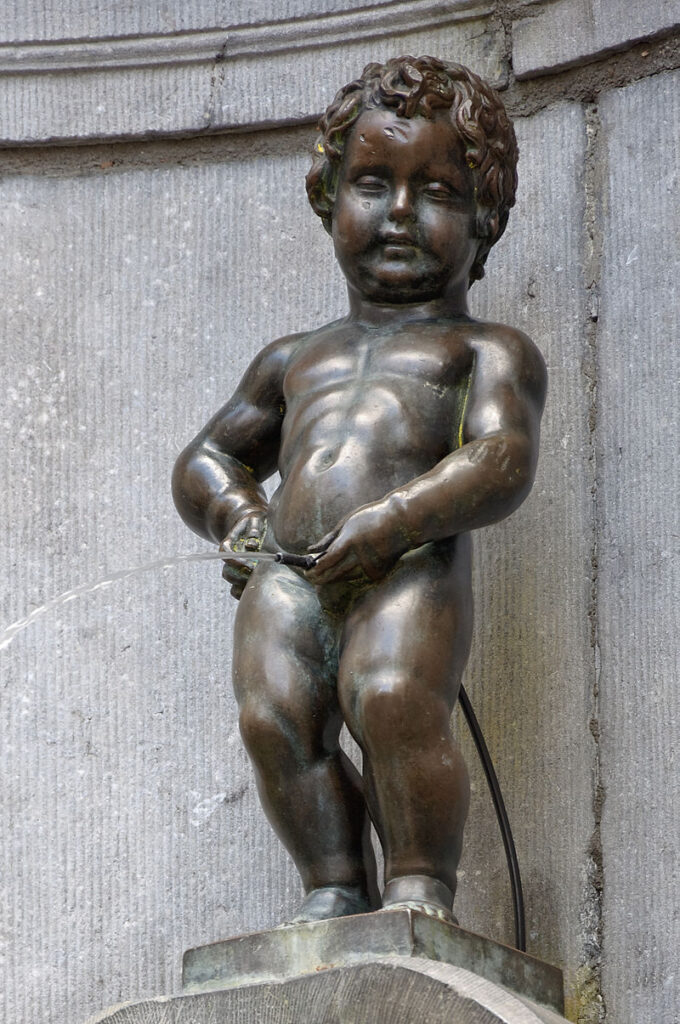
Manneken Pis is a landmark bronze fountain sculpture located in central Brussels. The statue was created by Hieronymus Duquesnoy the Elder in 1619 and survived the bombardment of Brussels in 1695. Standing at just 61cm tall, it depicts a naked little boy urinating into the fountain’s basin.
Originally designed as a practical purpose drinking water fountain in the 15th century, Manneken Pis has now become one of Brussels’ most famous landmarks. It is also known by its nickname, Little Pissing Man, and has been given several hundred costumes over time that are occasionally changed according to certain events and social gatherings.
14. Nefertiti Bust – Thutmose
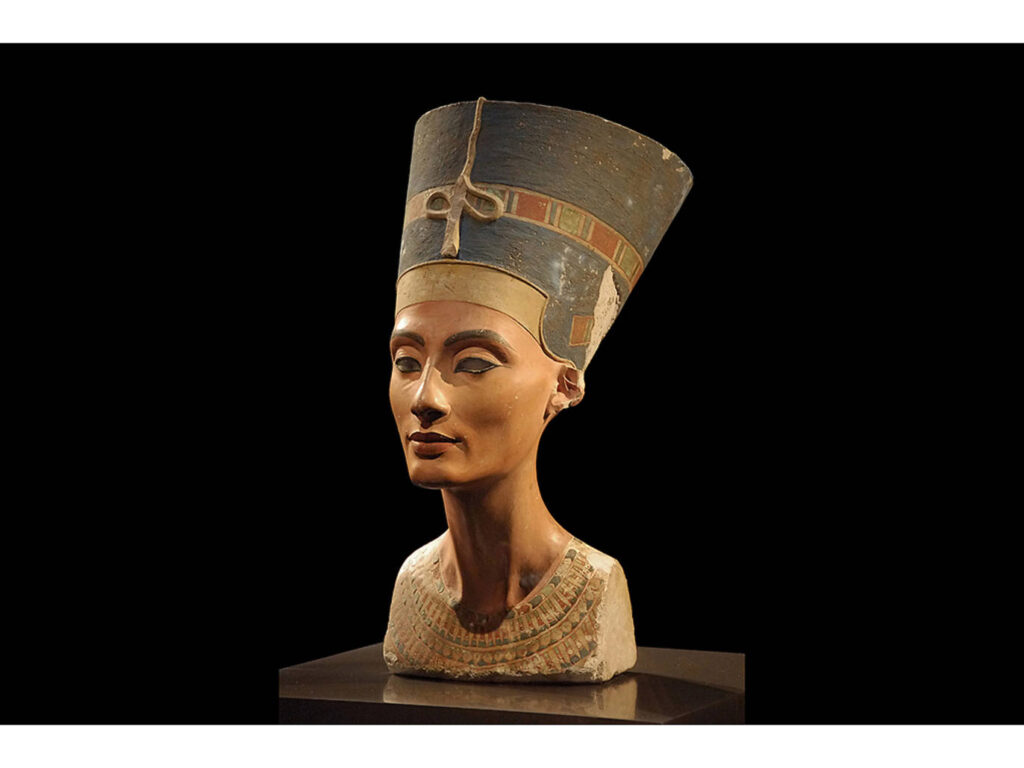
The Bust of Nefertiti is an ancient Egyptian sculpture created by the royal court sculptor Thutmose around 1345 BCE. Made of limestone coated in painted stucco, the bust is a representation of Queen Nefertiti and lacks inscriptions but can be identified by her characteristic crown.
Scholars suggest that Thutmose used the bust as a model for other depictions of Nefertiti because of its idealized style. The bust is significant not only for its beauty and craftsmanship but also for what it represents in Egyptian culture. The queen was known for her influence on religious practices, fashion, and art during her husband’s reign.
The artifact was discovered in Tell el-Amarna, found in Thutmose’s studio. Today, it is displayed prominently at the Neues Museum in Berlin. However, there have been controversies surrounding the ownership of the piece as calls to return it to Egypt continue to grow.
15. Maman – Louise Bourgeois
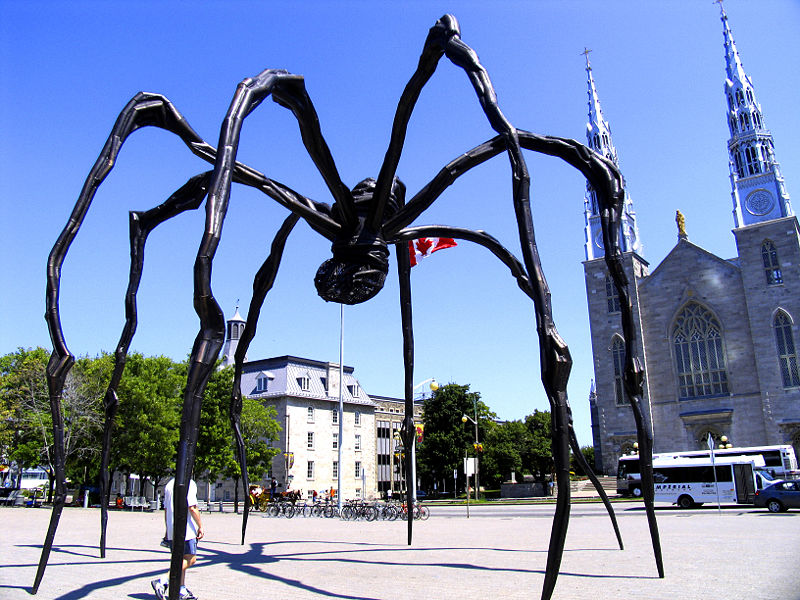
The Maman sculpture is an iconic work of art created by the renowned French-American artist Louise Bourgeois in 1999. It is a monumental steel spider standing at almost 9 meters tall and weighing around 6 tonnes. The sculpture features eight slender legs supporting a sac with numerous eggs made from marbles. This piece is made from stainless steel, bronze, and marble, and can only be installed outdoors or inside a building of industrial scale.
Bourgeois’ art frequently features spiders as a recurring motif that pays homage to her mother who was a weaver. Spiders are often associated with creativity, femininity, and fertility, making Maman a powerful symbol of these themes. The sculpture has become one of the most recognizable artworks globally, captivating many due to its unique design and massive scale.
Maman rests outside the National Gallery of Canada and required two cranes for installation due to its size and weight. The artwork is an excellent example of how sculptors use metal fabrication techniques to create large sculptures that are commercially viable while remaining visually stunning as pieces of art.
16. Great Sphinx Of Giza
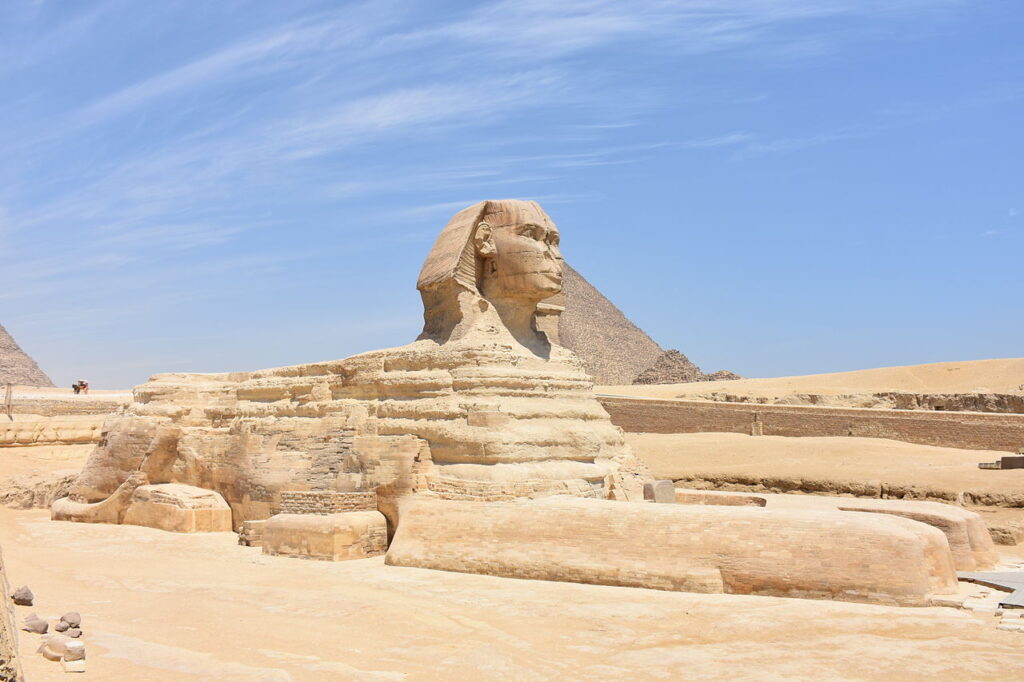
The Great Sphinx of Giza is a colossal limestone sculpture depicting a half-man, half-lion creature wearing a royal headdress and beard. It is widely accepted that the Sphinx was carved during the reign of King Khafre who ruled Egypt from c.2575-c.2465 BCE. The statue is located on the Giza plateau, which holds many other significant ancient monuments like Pyramids and Temples.
The Great Sphinx is one of Egypt’s most iconic landmarks and remains an enigma today. Historians speculate that it would have been an important symbol for the Old Kingdom Pharaohs; However, its true purpose remains uncertain despite years of excavation conducted by archaeologists.
Despite being over 4,500 years old, the Sphinx continues to inspire awe even today due to its sheer scale and detailed sculptures. Its sculpting technique sets it apart as one of the oldest and largest representation in Egypt’s art history. The carving techniques used for this masterpiece are still studied today as they were unlike anything seen before in Ancient Egyptian architecture.
17. Apollo And Daphne – Gian Lorenzo Bernini – 1622
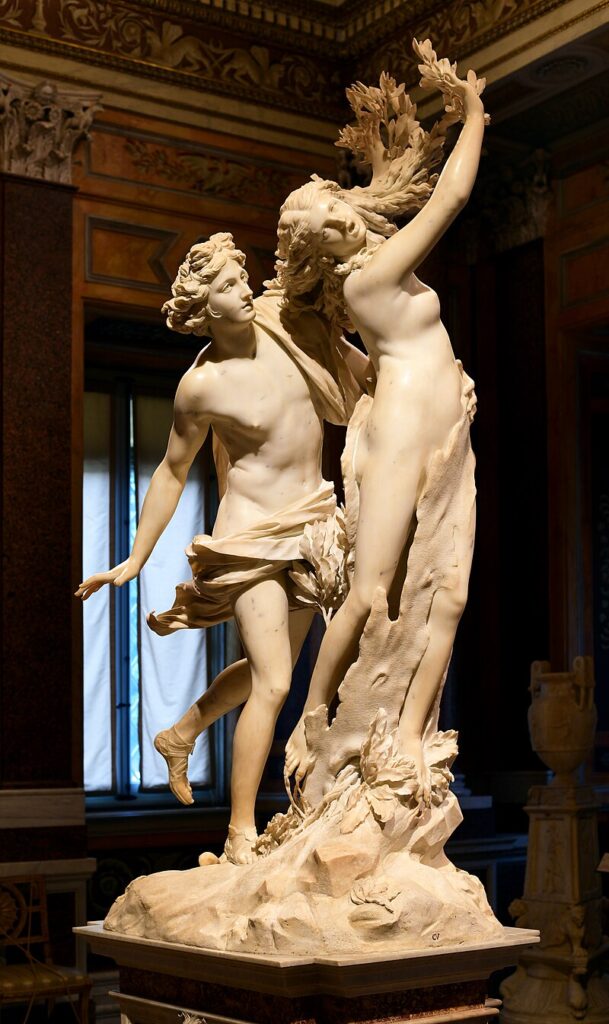
Gian Lorenzo Bernini’s Apollo and Daphne is a Baroque era masterpiece commissioned by Cardinal Scipione Borghese in 1622. The life-sized marble sculpture portrays a scene from Ovid’s Metamorphosis in which the god Apollo chases after the nymph Daphne, who prays to her father, a river god, for help. He responds to her plea by turning her into a laurel tree, allowing her to escape Apollo’s grasp.
Bernini captures this moment perfectly in his sculpture – Apollo is depicted mid-stride with outstretched arms, while Daphne appears to be caught in the midst of her transformation into a tree. The intricate details and fluidity of motion throughout the piece showcase Bernini’s incredible skill as an artist.
The sculpture is housed in Galleria Borghese in Rome and stands as one of Bernini’s most celebrated works. It has been praised for its breathtaking beauty, technical expertise, emotional depth and narrative power that take great influence on baroque art movements across Europe and America.
18. Cloud Gate – Anish Kapoor
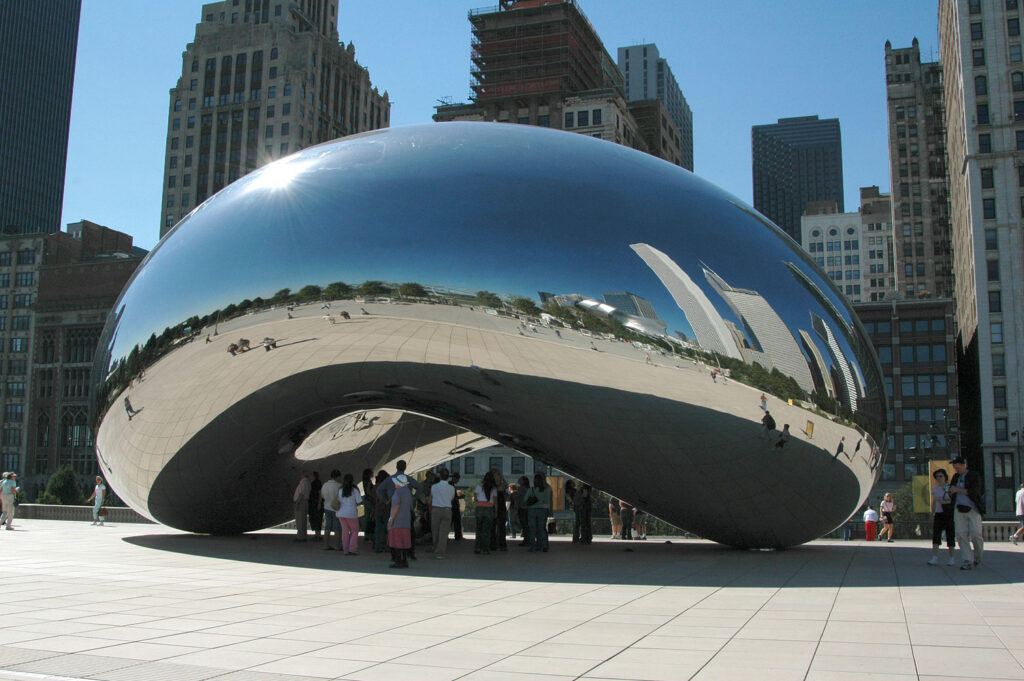
Anish Kapoor’s Cloud Gate is an iconic public sculpture in Chicago’s Millennium Park. The 110-ton elliptical artwork is made up of 168 stainless-steel plates welded together to form a highly-polished surface, which reflects the cityscape and passing clouds above. It was inspired by liquid mercury and has a distinct bean-like shape, earning it the nickname “The Bean.”
As Kapoor’s first permanent site-specific installation in the US, Cloud Gate has become a huge tourist attraction since its unveiling in 2004. Its reflective surface makes for unique photo opportunities day or night, as the sculpture’s lighting changes throughout the day.
Kapoor’s work extends beyond Cloud Gate; he became the first living artist to have a solo show at London’s Royal Academy of Arts and has been recognized with many awards throughout his career. With its impressive size and stunning reflective qualities, Cloud Gate remains one of his most renowned works to this day.
19. “Terracotta Army” – Emperor Qinshihuang’s Mausoleum Site Museum – 247 – 208 BCE
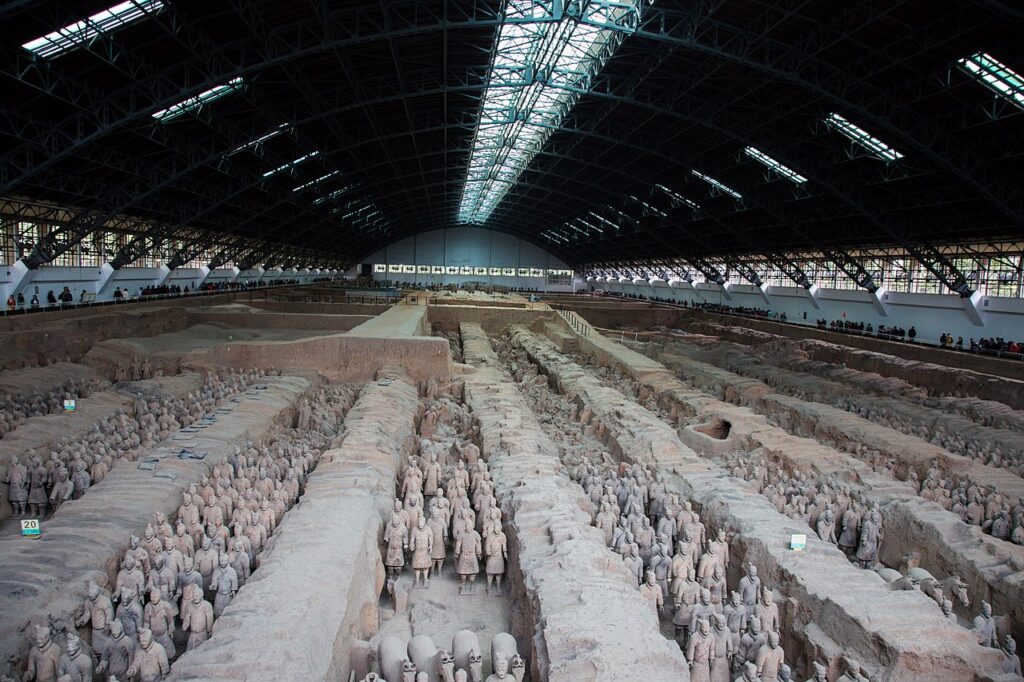
The Emperor Qinshihuang’s Mausoleum Site Museum is a world-renowned attraction located at the northern foot of Lishan Mountain, 35 kilometers northeast of Xi’an, Shaanxi Province. The mausoleum site houses the tomb of Emperor Qinshihuang, the founder of the first unified empire in Chinese history during the third century BCE. The construction of his tomb began at about 247 BCE and lasted for 39 years until his death in 208 BCE.
One of the primary draws for visitors to this museum is its Terracotta Army – a collection of terracotta sculptures depicting warriors and horses buried alongside Emperor Qinshihuang in 210-209 BCE to protect him in his afterlife. This discovery became one of the biggest contemporary archaeological finds when it was discovered in 1974 and has since become China’s most popular tourist site.
Aside from its historical significance, what makes this museum truly incredible is its high level of integrity and authenticity. Every detail inside has been preserved with meticulous care to ensure visitors feel as though they are stepping back into ancient China.
Today, scientists continue to analyze animal remains and sculptures unearthed from within the mausoleum dating back to the Qin Dynasty. With so much history around every corner, it’s easy to see why people from all over flock here every year to marvel at its beauty, complexity, and historical significance.
20. Equestrian Statue Of Marcus Aurelius
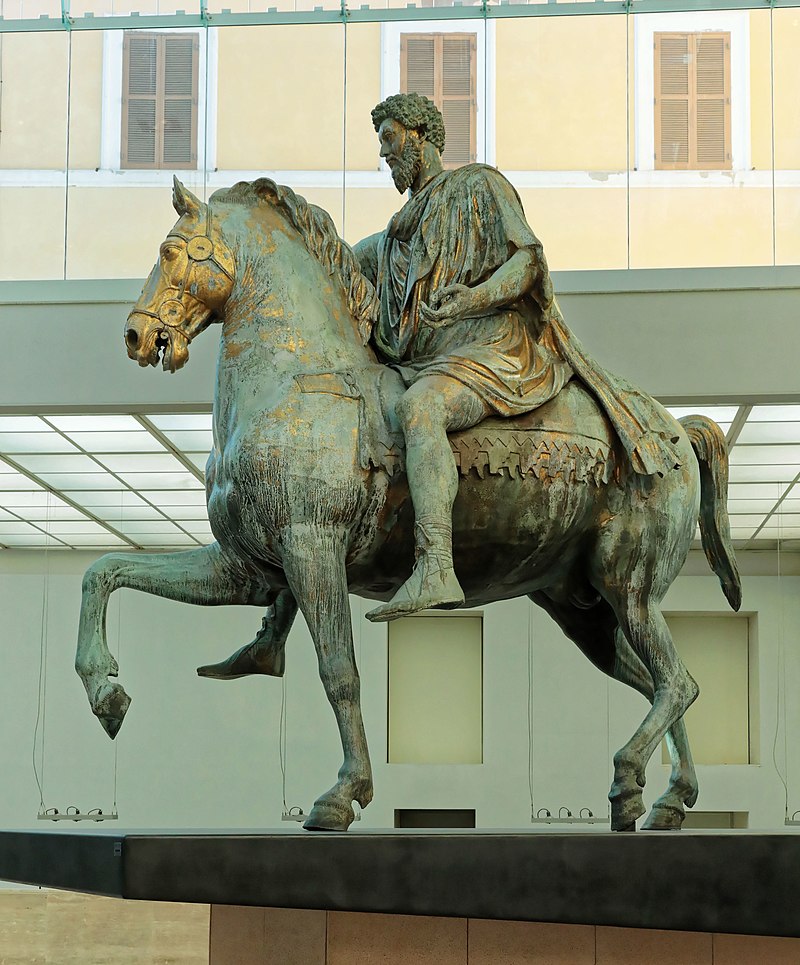
The Equestrian Statue of Marcus Aurelius is a remarkable ancient Roman bronze statue that stands 4.24 meters tall and depicts the emperor on horseback participating in a public ceremony. It is the only remaining equestrian statue from the Roman Empire, and its historical significance makes it a valuable cultural artifact. The statue emphasizes the emperor’s preference for peace and intellectual pursuits, rather than military conquests.
One of the most striking features of this sculpture is its horse, which is a magnificent example of dynamism captured in the sculptural medium. The horse’s muscular structure conveys both strength and grace, while its mane and tail appear to be flowing in the wind, conveying movement even though it is static. Interestingly, the saddle cloth design has Sarmatian origins, honoring Marcus Aurelius’ victory over this group.
Although erected in 175 CE, there are debates as to its original location. Despite being recognized for years as an equestrian portrait of Emperor Constantine, studies have found that it indeed portrays Marcus Aurelius instead; comparisons with other depictions made during his lifetime show many similarities between facial features (beard style or nose) and details like clothing decoration.
21. The Little Mermaid
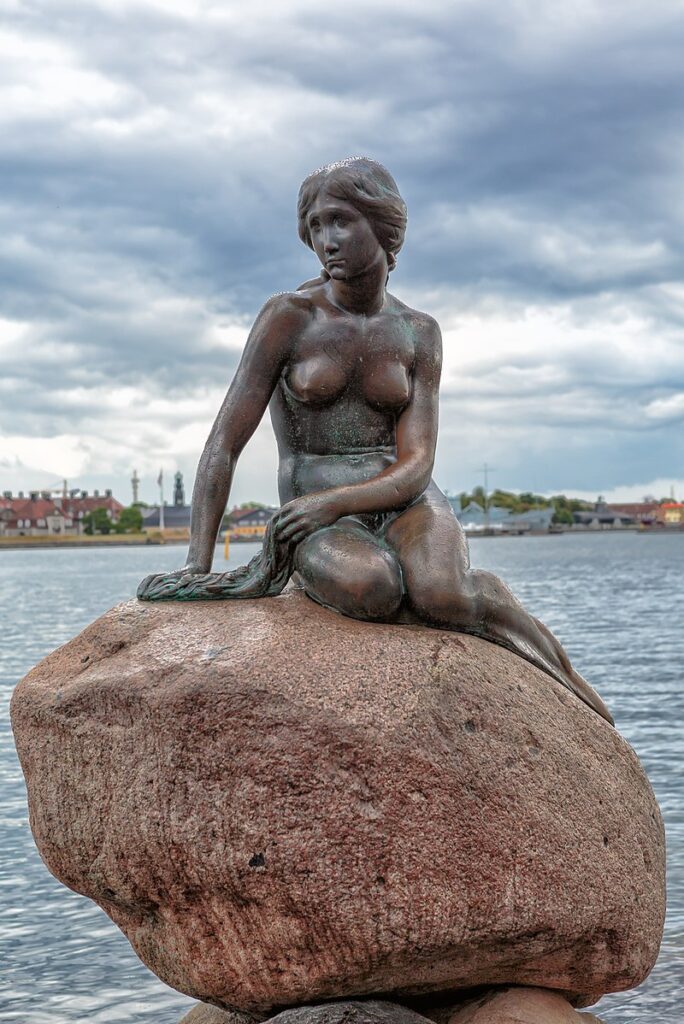
“The Little Mermaid” is a classic animated Disney film that has been an inspiration to many throughout the years. The story was originally written by Hans Christian Andersen, which later on inspired a bronze statue in Copenhagen, Denmark sculpted by Edvard Eriksen. This statue is one of the most photographed statues globally and attracts numerous tourists year-round.
Over time, the statue has faced incidents of vandalism leading to its removal for maintenance purposes. There are even reports of a secret location for the original sculpture to prevent further damage from occurring. Several replicas of the statue can be found in other countries worldwide, including Brazil, China and the United States.
Despite some people having difficulty generating mental imagery, artists have created their interpretation of “The Little Mermaid”. One interesting fact worth mentioning is that there are several hidden symbols and references behind Eriksen’s sculpture linked to both “The Little Mermaid” story and Danish culture.
“The Little Mermaid” tale continues to fascinate people around the world even after decades since its creation. The bronze sculpture immortalizes this mythical creature whose charm continues to bewitch generations today and forevermore.
22. Venus Of Willendorf
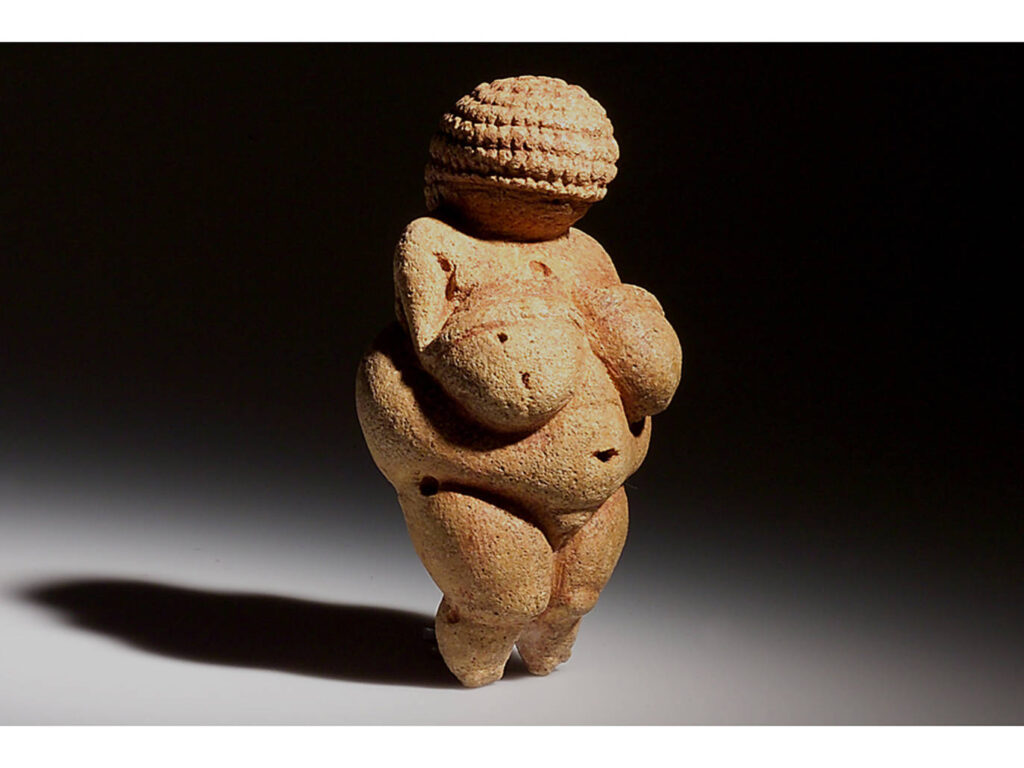
The Venus of Willendorf is a small female figurine that was discovered in Willendorf, Austria. It is an Upper Paleolithic art form made out of oolitic limestone, estimated to be created during 25,000-30,000 years ago. As one of the world’s oldest known works of art, it holds significant historical and archaeological value.
The statuette depicts a female nude with exaggerated physical features such as massive breasts, stomach and buttocks. The purpose and creator remain to be archaeologically debated topics due to the lack of documentation surrounding it. However, it provides important evidence regarding the prehistoric era and has helped contribute to our understanding of early human culture.
Similar Stone Age figurines depicting women have been found across Europe and Eurasia. These ancient sculptures were likely used for religious or symbolic purposes and have played an essential role in shaping the way we view early human artistic expression.
In conclusion, the Venus of Willendorf is undoubtedly one of humanity’s most precious treasures in terms of both artistic value and historical significance. Its unique features provide insight into prehistoric culture while simultaneously igniting curiosity within scholars today. Through extensive analysis and examination, future generations are sure to gain even deeper understandings regarding this invaluable piece of human history.
23. Apollo Belvedere – Giovanni Angelo Montorsoli
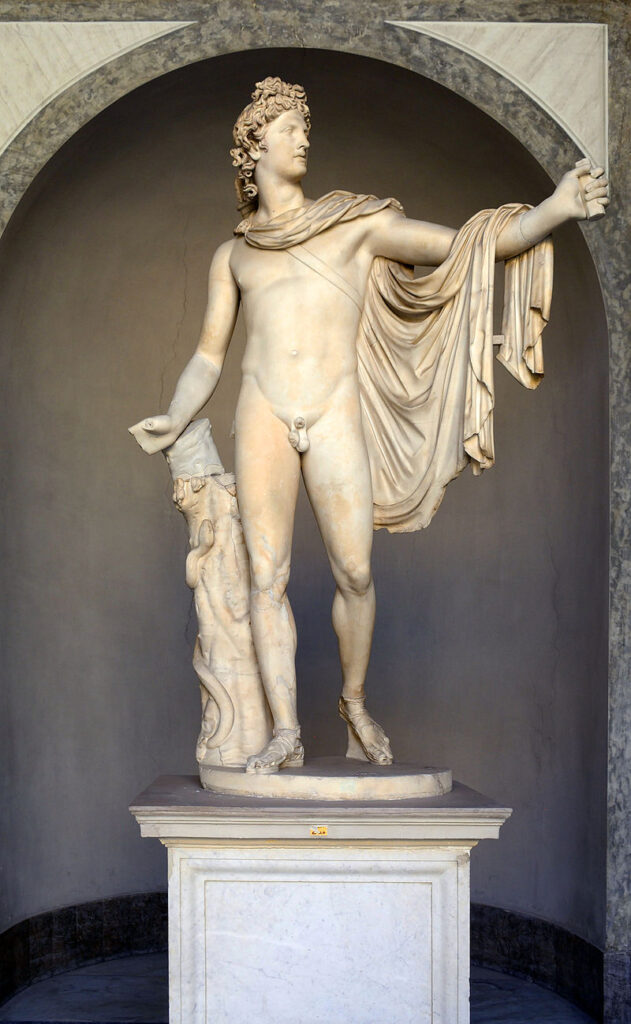
Giovanni Angelo Montorsoli, a renowned sculptor and pupil of Michelangelo, restored the ancient marble sculpture Apollo Belvedere in the 1530s. The Apollo Belvedere is believed to date back to the reign of Hadrian and it is considered one of the most perfect examples of ancient art. Montorsoli’s other restorations included Laocoön and his Sons group in Vatican.
The restoration process by Montorsoli faced some challenges since he cut off the preserved right arm below the elbow while experimenting on the right hand. However, despite this setback, he was able to restore this masterpiece eventually. It represents the height of Classical art and its proportions are revered as an ideal human form until today.
Montorsoli’s work on restoring these antique sculptures in Vatican shows his mastery over sculpture restoration during that time period. His contribution ensured that these priceless works were not lost to time but instead were restored so that people can appreciate them today.
24. Ecstasy Of Saint Teresa – Gian Lorenzo Bernini
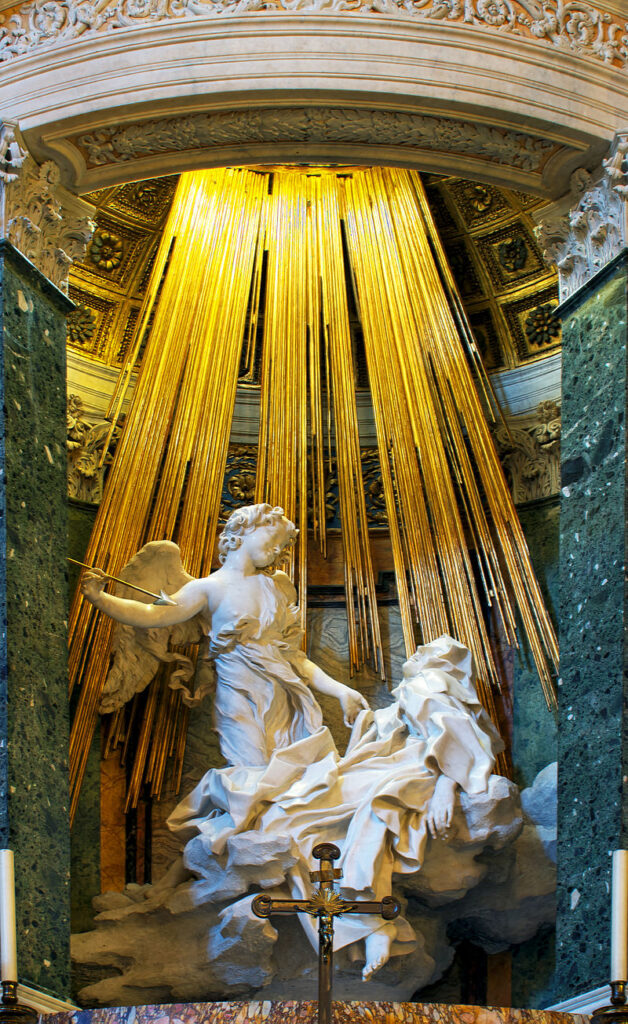
Gian Lorenzo Bernini’s “Ecstasy of Saint Teresa” is a white marble sculpture representing the Spanish Carmelite nun in a state of religious consciousness, with an angel holding a spear standing over her. This masterpiece was commissioned by Cardinal Federico Cornaro in 1647 for his burial chapel, replacing the previous sculpture showing St. Paul in Ecstasy.
Bernini oversaw and completed the entire ensemble during Innocent X’s papacy. The Cornaro Chapel is where this exceptional sculpture is located and takes its name from the Cornaro family who hired Bernini to sculpt Saint Teresa. The Baroque masterpiece perfectly exhibits several crucial features like physical movement, dramatic expression, and technical perfection.
This exquisite work of art has become one of the most celebrated sculptures ever created throughout history due to its realism and emotional intensity that powerfully evokes spiritual devotion in viewers. Its impressive representation of Saint Teresa’s spiritual rapture with every detail captured at their highest degree makes it unquestionably one of Bernini’s leading works.
25. Perseus With The Head Of Medusa – Antonio Canova
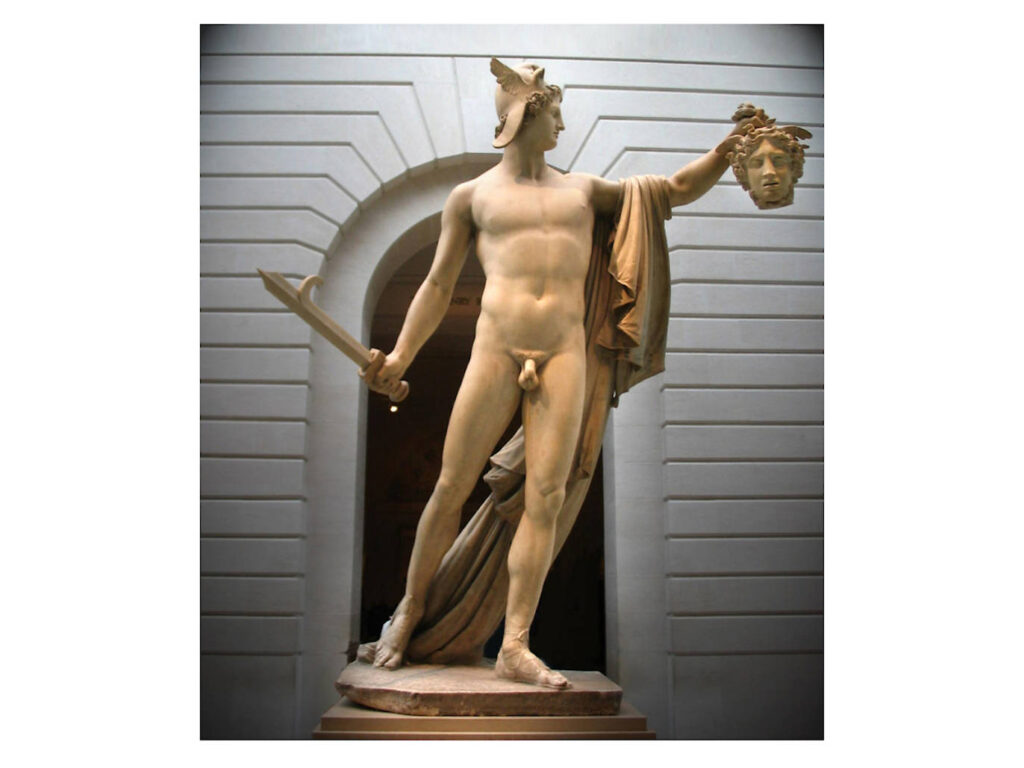
Antonio Canova’s “Perseus with the Head of Medusa” is a neoclassical marble sculpture that represents the mythological hero Perseus holding up Medusa’s severed head. Canova was an influential sculptor in Rome during the late eighteenth and early nineteenth centuries, known for his lifelike depictions of human anatomy.
The sculpture highlights Perseus’ confident stance and well-proportioned muscular body as he presents the head of Medusa to the world. In Greek mythology, it is said that Perseus slayed Medusa and used her mortal gaze to turn his enemies into stone. Later on, he gave her head to goddess Athena who wore it atop her shield.
This iconic sculpture has inspired many other art pieces in various mediums due to its remarkable attention to detail, particularly in regards to Perseus’ curly hair and intense facial expression. The Metropolitan Museum of Art in New York houses a plaster cast replica of this masterpiece by Antonio Canova.
26. The Little Fourteen-Year-Old Dancer – Edgar Degas
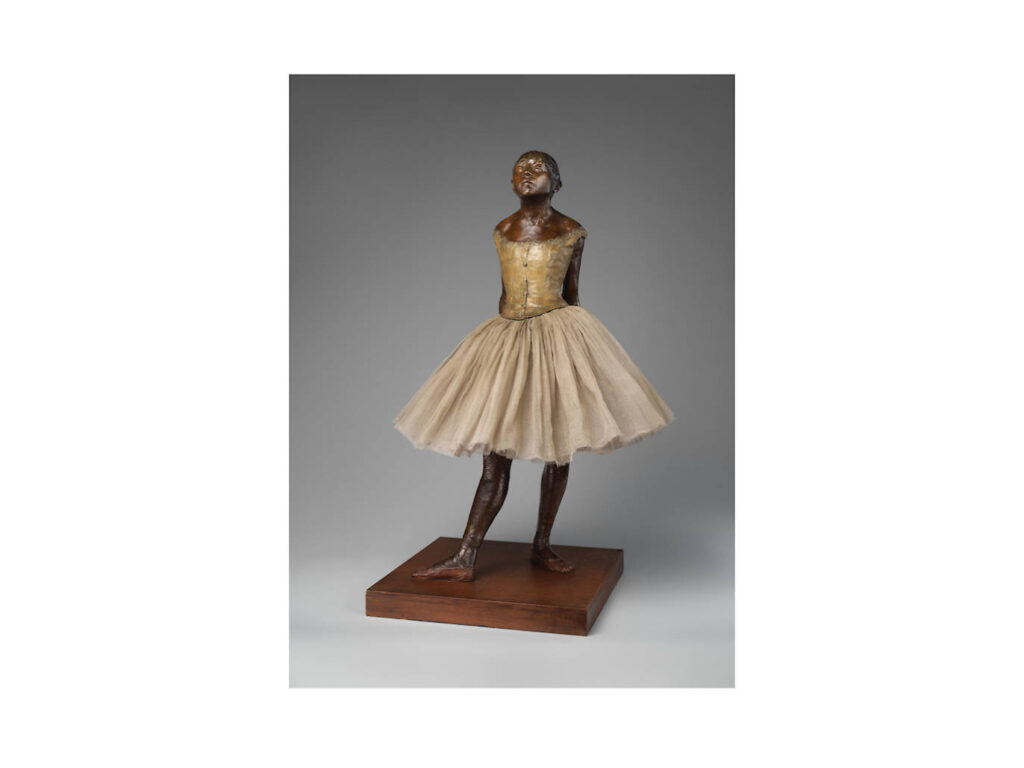
Edgar Degas was a French artist who was known for his sculptures of dancers, jockeys, and horses. One of his most famous sculptures is The Little Fourteen-Year-Old Dancer, which depicts a young student named Marie van Goethem from the Paris Opera Ballet dance school. It was the only sculpture that he exhibited during his lifetime, despite making over 100 wax figures.
The sculpture is 70% of the girl’s real size and stands slightly taller than three feet or about one meter. Dressed in a silk bodice, gauze tutu, fabric slippers with satin ribbon in her hair wig, it presents an extraordinary new conception of sculpture. The original wax model was first displayed at the sixth Impressionist Exhibition held in April 1881.
Little Fourteen-Year-Old Dancer has inspired several replicas made using bronze casting techniques since its creation. Mrs. H.O. Havemeyer bequeathed Little Fourteen-Year-Old Dancer and seventy-two other Edition A Degas bronzes to Metropolitan Museum of Art (MET), where visitors can still see them today among its galleries.
Degas’ attention to detail captures the gracefulness and elegance of ballet dancers perfectly in this masterpiece artwork. Little Fourteen-Year-Dancer is an exemplary display of how talented he was as a sculptor who conveyed beauty through movement masterfully that people can enjoy for generations to come at the MET museum.
27. Unique Forms Of Continuity In Space, Umberto Boccioni
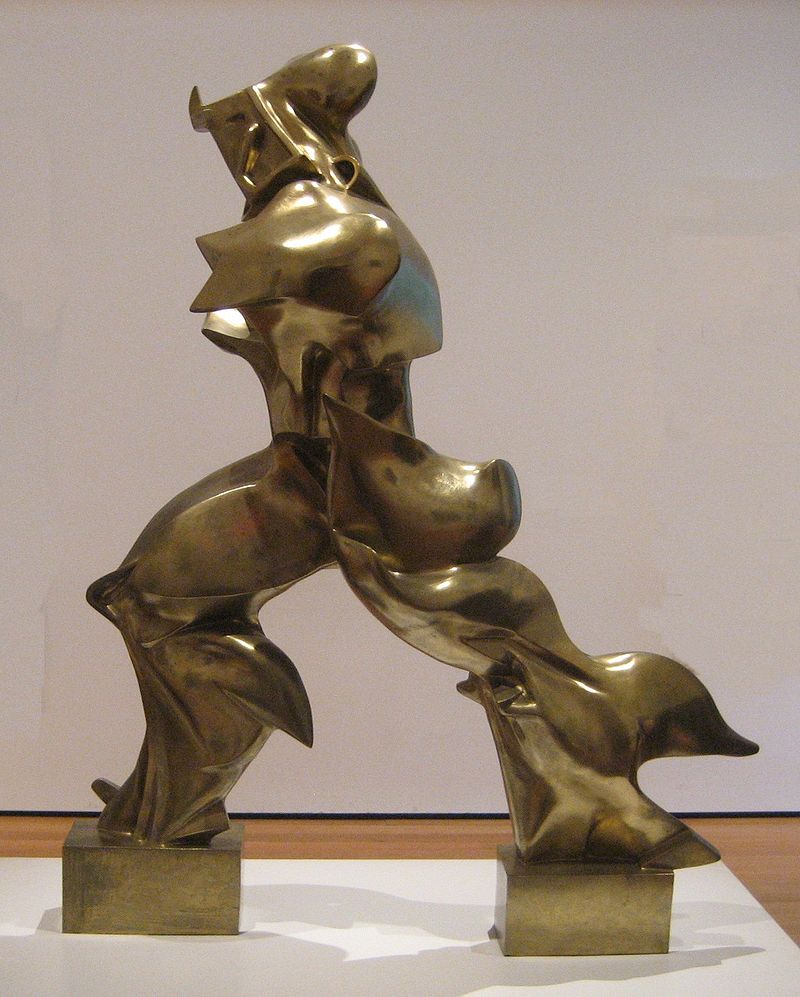
Unique Forms of Continuity in Space is a bronze sculpture created by Umberto Boccioni in 1913. This masterpiece is an embodiment of the Futurist movement, which sought to reflect a sense of dynamism and motion in art. The sculpture depicts a human figure moving forward at full speed, captured in one glorious moment.
Boccioni’s vision was to convey the urge towards progress and mechanization through art. He exaggerated the body’s dynamism, showcasing its fluidity and speed. The sculpture embodies a notion of “synthetic continuity” of motion that was at the heart of Boccioni’s work.
The Unique Forms of Continuity in Space is one of Boccioni’s most famous pieces, and it has been featured on Italian-issue 20 cent euro coin. It symbolizes his ideas on contemporary life by rejecting traditional forms while embracing new conceptions based on technology and modernization.
See our full analysis of Unique Forms of Continuity in Space.
28. Mlle Pogany, Constantin Brancusi – 1910-1911
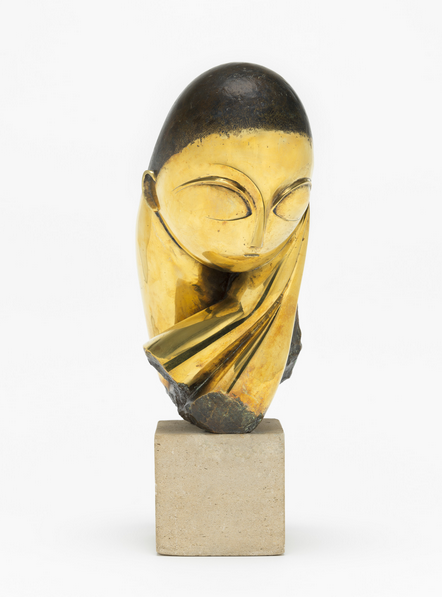
Mlle Pogany, a sculpture by Constantin Brancusi, is a portrait of Margit Pogany, a Hungarian artist who was also his lover and model in 1910 and 1911. The bust depicts the schematized face of Pogany whose profile remains anonymous.
Mlle Pogany holds an interesting backstory since it wasn’t initially commissioned but rather Margit requested it from her lover after visiting his studio in Paris. After their relationship ended six years later, she inherited most of his collection including the sculpture.
29. Bicycle Wheel, Marcel Duchamp
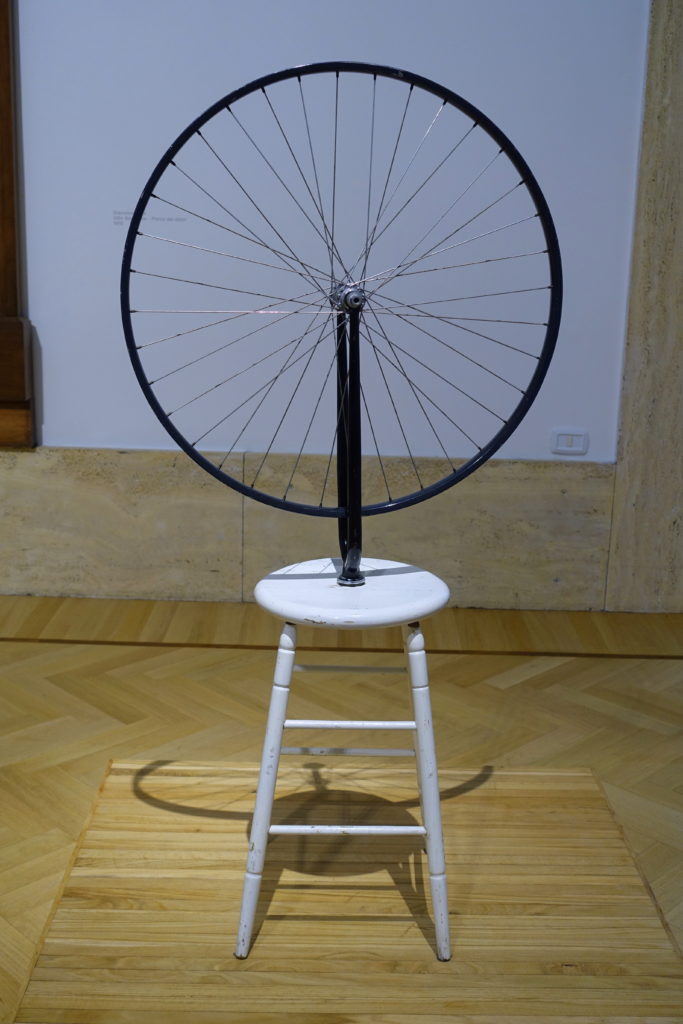
Marcel Duchamp’s Bicycle Wheel, created in 1913, is considered one of his first readymades. It is composed of a metal bicycle wheel mounted on a painted wooden stool which he had found. This artwork became famous as an example of his readymades, which are artworks made from everyday objects.
The term “readymade” was coined by Duchamp after he moved to New York in 1915. He wanted to move away from traditional modes of painting and emphasize the conceptual value of art instead. The Bicycle Wheel is the earliest example of this class of groundbreaking artworks.
Duchamp’s work strayed away from conventional aesthetics. The work contains a movable element and represents Duchamp’s fascination with using ordinary objects to challenge what art can be. Bicycle Wheel was technically an “assisted readymade” because he combined two objects into one piece.
30. Calder’s Circus, Alexander Calder
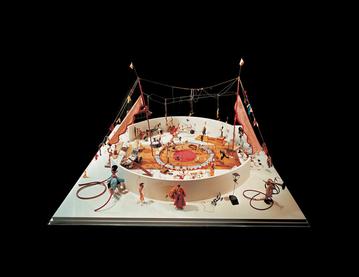
Calder’s Circus is an imaginative and charming portrayal of a circus in which wire models are used to imitate the actions of trapeze artists, clowns, animal tamers, and other circus performers. The circus was created by the American sculptor Alexander Calder between 1926 and 1931. He made use of different types of materials to construct his wire models, including wood and various metal wires. The models were then rigged up with strings to influence their movements, just like performers in a real circus.
Alexander Calder recycled everyday objects like buttons and cardboard boxes to make his own “big top” stars come alive. He performed these replicas for enthusiastic audiences from his Parisian studio in Montparnasse for ten years. The intricacy detail Calder put into forming each performance background prop could be seen as each model performed its unique stunts.
31. Guitar, Pablo Picasso
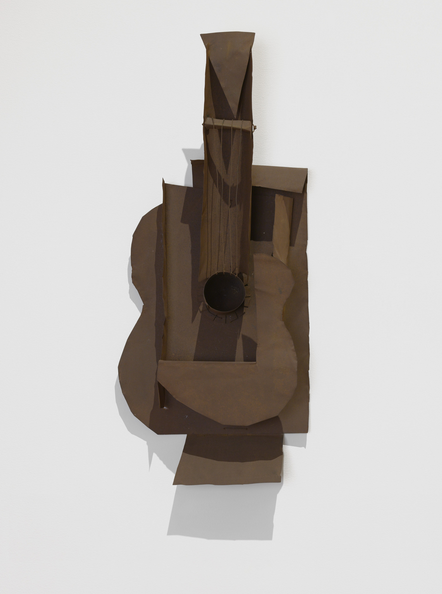
Pablo Picasso’s Guitar series, created from 1912-14, is a significant representation of his overall cubist style. The series marks an essential transition from analytical cubism to synthetic cubism. In November/December 1912, the artist made first collages using newspaper fragments, leading to a revolutionary leap from modeling to assemblage.
Initially, Picasso constructed the work in cardboard in 1912 before later recreating it in sheet metal. The modern-day feeling of these materials was very different from traditional sculptural materials. Picasso’s Guitar, Sheet Music, and Glass (1912) showcases his mastery of shapes in a Cubist collage.
32. L’Air, Aristide Maillol
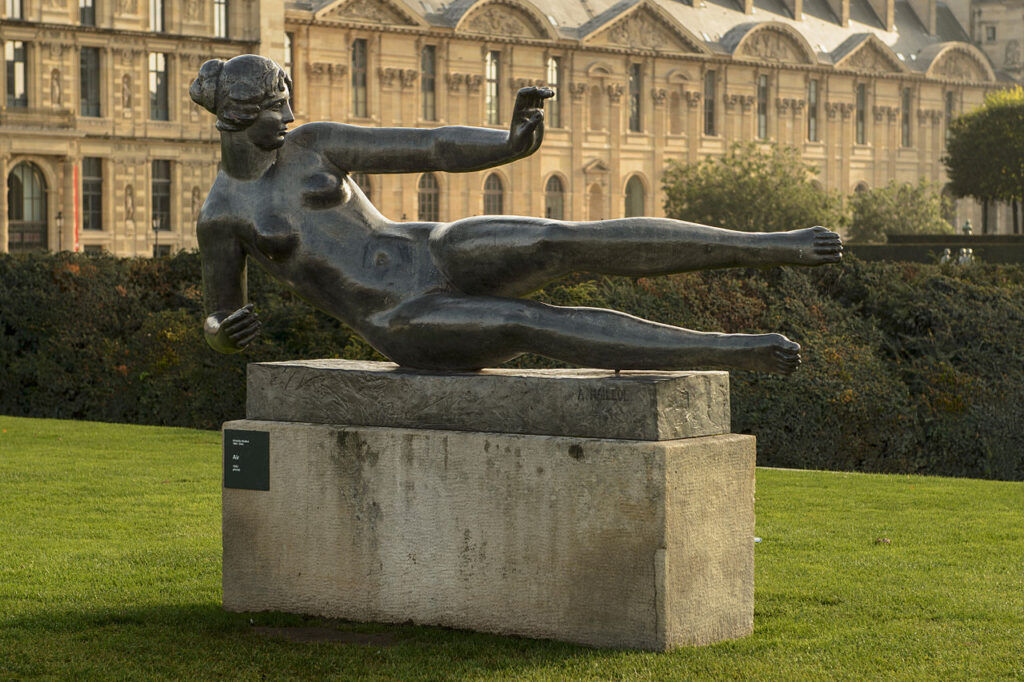
Aristide Maillol was a renowned French sculptor who specialized in creating statues of female nudes. He displayed a unique concern for mass and rigorous formal analysis in his artwork, which was highly influenced by his contemporary Paul Gauguin. Born in Banyuls-sur-Mer, Roussillon, Maillol studied at the ecole nationale supérieure des beaux-arts in Paris and joined the decoratively inclined Nabis group in 1894.
One of Maillol’s most notable sculptures was Air; it is a lead or bronze sculpture modeled on Dina Vierny. The sculpture depicts a naked woman bending over while holding up her arms as if to touch the sky. This sculpture is an excellent representation of how Maillol combined mythological themes with sensuality to create artworks that capture the viewer’s imagination.
33. Women And Dog, Marisol
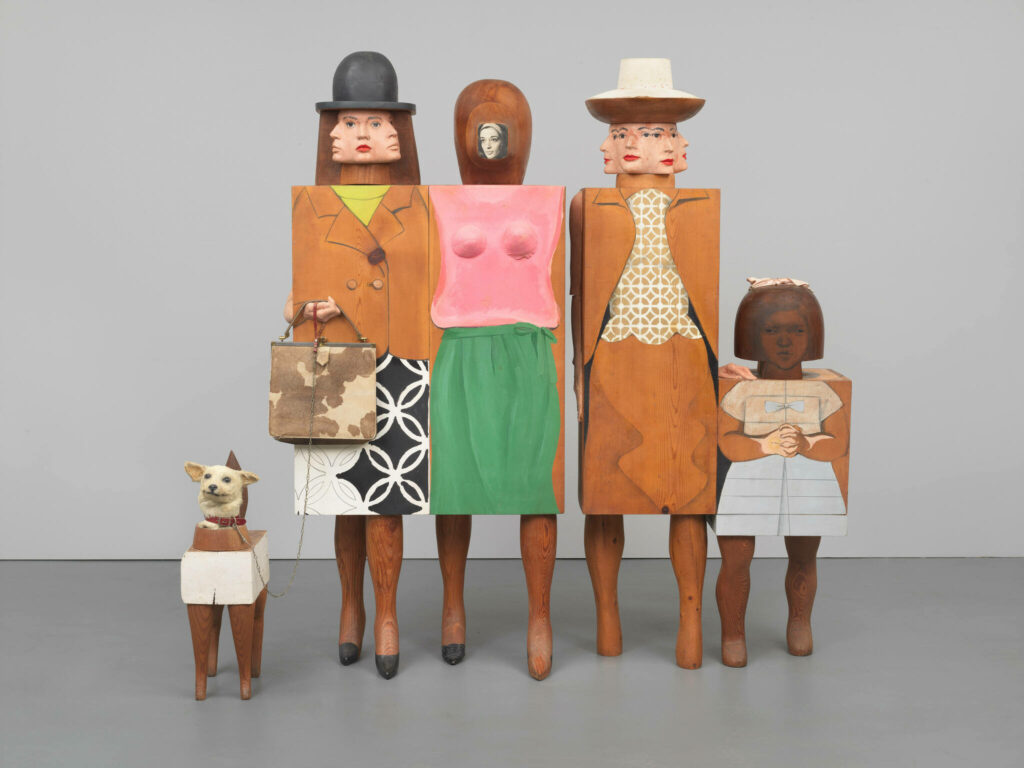
Marisol’s Women and Dog is a collection of four life-size sculptures, each a self-portrait of the artist. These sculptures include plaster molds of Marisol’s own face and a black and white photograph of the artist. Marisol was an established American sculptor known for her carved wooden sculptures that frequently included photos and painted components. Her art often employed geometric abstraction, heavily inspired by pre-Columbian art.
Women and Dog, made using plaster casts painted with acrylics, was emblematic of Marisol’s fascination with everyday objects that were central to Pop art. Inspiration for these life-like pieces came from diverse sources ranging from everyday people to magazines or photographs she found in thrift shops. The woman-dog pairing suggests companionship as an important theme in her work.
Marisol explored visionary forms within her sculpture undeterred by prevailing sensibilities at the time, creating unique pieces imbued with emotion that leave a lasting impression on viewers. Her influence on contemporary art has been immense many years after she started producing her thought-provoking works.
Overall, Women and Dog delivers innovative content without eschewing the vibrant aura of Pop Art by showcasing innovative design, sculpting technique usage exceptional even today coupled with unique materials – features seen throughout Marisols work .
34. Spiral Jetty, Robert Smithson
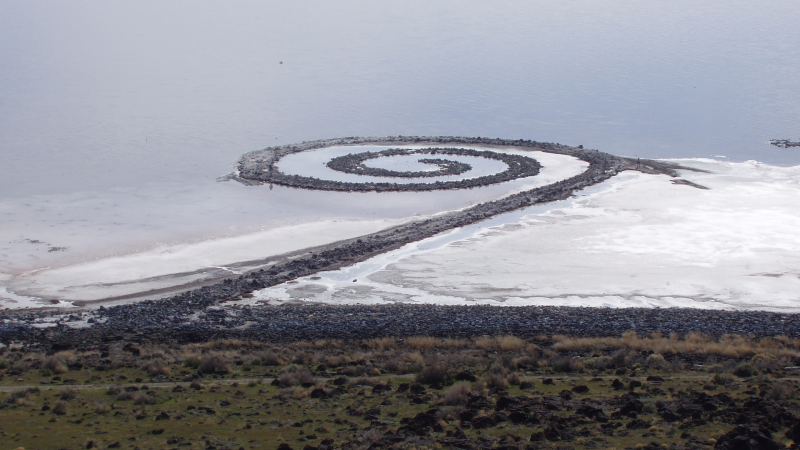
Spiral Jetty is a famous earthwork sculpture located in Great Salt Lake, Utah, constructed by artist Robert Smithson in 1970. The sculpture stretches more than 1,500 feet into the lake and was made using black basalt rocks and earth gathered from the site. It reflects Smithson’s interest in entropy, specifically the process of things breaking down.
Smithson documented the construction of Spiral Jetty in a 32-minute color film titled Spiral Jetty. After completion, it faced various challenges with some people wanting to destroy it and put the land on which it lies into different use. However, over time, it has become one of the most well-known and influential works by Robert Smithson.
Spiral Jetty is an iconic example of earthwork sculptures that combine art and nature to create something beautiful. The fact that it resurfaces every time there is a drought or low tide adds to its uniqueness as an artwork that interacts with its surroundings. As such, visiting Spiral Jetty offers not just an opportunity to marvel at its impressive size but also allows visitors to experience firsthand how natural elements come together with art to form something truly extraordinary.
